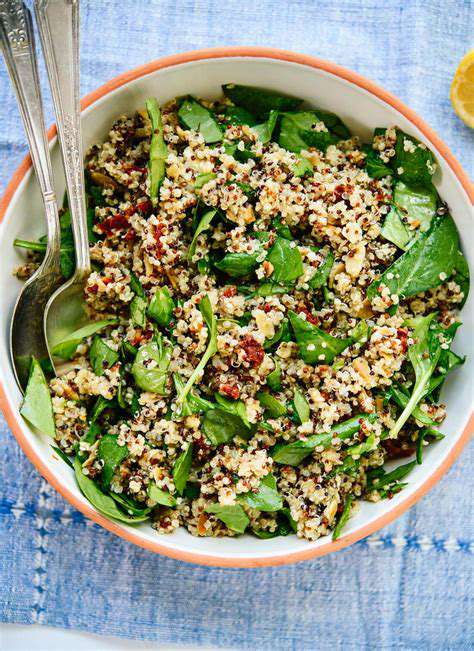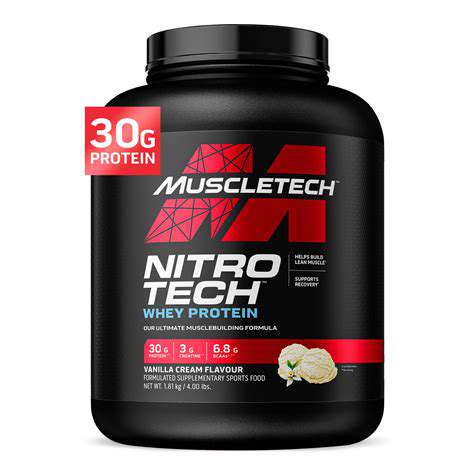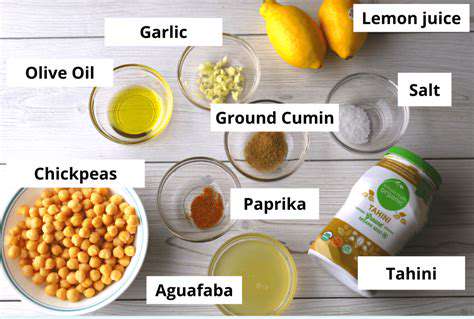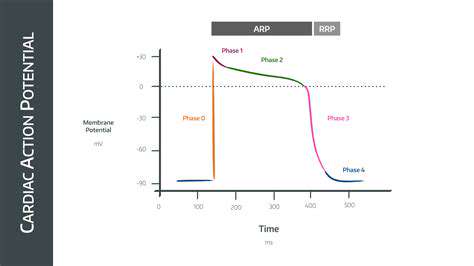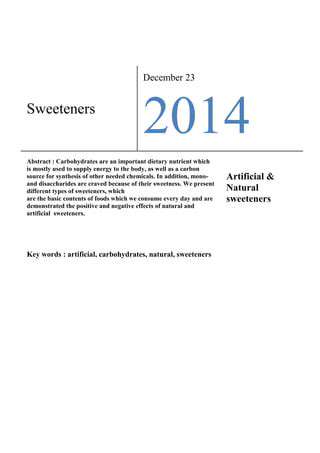Health Benefits of Garlic
Garlic's Role in Blood Pressure Management
Historical medical texts from multiple cultures document garlic's cardiovascular benefits. Contemporary research confirms that regular garlic consumption may help relax blood vessels through its active sulfur compounds. These effects appear most pronounced in individuals with borderline hypertension. While not a substitute for prescribed medications, garlic can complement medical treatment under professional supervision.
The scientific community continues investigating optimal garlic preparations and dosages for cardiovascular support. Raw garlic, aged extracts, and cooked preparations may offer different bioactive profiles. Future studies may clarify which populations benefit most from garlic supplementation.
Garlic and Cholesterol Regulation
Emerging evidence suggests garlic may influence cholesterol metabolism. The allicin in garlic appears to inhibit cholesterol synthesis in the liver while enhancing its elimination. Some clinical trials report modest reductions in LDL cholesterol with regular garlic intake, though results vary across studies. Nutritionists often recommend garlic as part of a heart-healthy diet rather than as an isolated treatment.
Garlic's Potential Antioxidant Properties
The sulfur compounds in garlic demonstrate impressive free radical scavenging abilities. These antioxidants help neutralize oxidative damage that contributes to arterial plaque formation. Garlic's antioxidant capacity may explain some of its observed cardiovascular benefits, particularly in reducing inflammation markers. Cooking methods affect garlic's antioxidant potential, with crushed raw garlic showing the highest activity.
Garlic and Blood Vessel Health
Garlic appears to support endothelial function—the inner lining of blood vessels. Improved endothelial health leads to better vasodilation and circulation. Some research indicates garlic may help prevent excessive platelet aggregation that can lead to dangerous clots. These vascular benefits make garlic a promising dietary component for maintaining healthy blood flow as we age.
The Importance of Moderation and Consultation
While generally safe, garlic can interact with certain medications like blood thinners. Some individuals experience digestive discomfort with high garlic intake. Consulting a healthcare provider before making significant dietary changes ensures safe integration with your personal health profile. For those sensitive to garlic's taste or odor, odor-controlled supplements may provide an alternative.
Obsessive thoughts characteristic of OCD differ fundamentally from everyday worries. These intrusive mental patterns bypass normal cognitive filters, creating disproportionate distress about contamination, safety, or perfection. Contemporary neuroscience views these patterns as neurological processing differences rather than character flaws. Effective treatments now focus on retraining brain responses through specialized therapies.
Managing Blood Sugar Levels Naturally
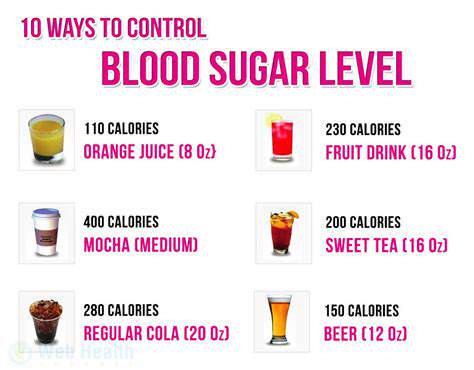
Natural Approaches to Stabilizing Blood Sugar
Blood sugar management begins with dietary awareness. Strategic meal planning emphasizing low-glycemic foods helps maintain steady glucose levels throughout the day. Combining carbohydrates with proteins and healthy fats slows digestion, preventing sudden blood sugar spikes. Many nutritionists recommend the plate method—dividing your plate into non-starchy vegetables, lean protein, and whole grains.
Understanding individual glycemic responses proves equally important. The same food may affect people differently based on metabolism, activity level, and gut microbiome. Keeping a food and symptom journal helps identify personal triggers and optimal food combinations.
Dietary Strategies for Blood Sugar Management
Fiber-rich foods form the cornerstone of blood sugar control. Soluble fiber creates a gel-like barrier in the digestive tract, slowing carbohydrate absorption. Incorporating legumes, nuts, seeds, and whole grains provides sustained energy while minimizing glucose fluctuations. Many people find success with Mediterranean-style eating patterns that emphasize plant-based foods and healthy fats.
Meal timing also influences blood sugar regulation. Eating smaller, balanced meals every 3-4 hours often works better than large, infrequent meals. This approach prevents the extreme highs and lows that can lead to energy crashes and cravings.
The Role of Exercise in Blood Sugar Control
Physical activity improves insulin sensitivity for hours after exercise. Muscles become more efficient at absorbing glucose from the bloodstream during and after movement. Both aerobic exercise and resistance training offer unique benefits for blood sugar management. Even short activity breaks after meals can significantly blunt postprandial glucose spikes.
Consistency matters more than intensity for long-term blood sugar benefits. Finding sustainable movement practices—whether gardening, dancing, or swimming—increases the likelihood of maintaining an active lifestyle. Many fitness trackers now include glucose monitoring features to help users understand their personal exercise responses.
Stress Management and Blood Sugar Regulation
The stress response directly impacts glucose metabolism through cortisol and adrenaline. Chronic stress creates a physiological state that elevates blood sugar as part of the fight-or-flight response. Mindfulness-based stress reduction techniques have shown particular promise for improving glycemic control in clinical studies.
Quality sleep forms another critical component of blood sugar regulation. Sleep deprivation impairs glucose metabolism and increases insulin resistance. Establishing good sleep hygiene—consistent bedtimes, dark cool rooms, and limited screen time before bed—supports both metabolic and mental health.
Beyond the Basics: Other Potential Benefits

Beyond the Fundamentals of Potential Energy
Potential energy concepts extend far beyond textbook examples. This fundamental physical principle manifests in everything from protein folding to planetary orbits. The energy stored in molecular bonds drives essential biological processes, while gravitational potential shapes the structure of galaxies. Understanding these applications transforms abstract theory into tangible reality.
Different potential energy forms interact in complex systems. Chemical potential energy in fuel converts to thermal energy during combustion, while elastic potential in springs powers mechanical devices. These energy transformations follow precise physical laws while enabling countless technological innovations.
Exploring the Diverse Applications of Potential Energy
Modern engineering harnesses potential energy in increasingly sophisticated ways. Pumped-storage hydroelectric plants exemplify large-scale potential energy utilization, storing excess electricity as gravitational potential. Similarly, advanced battery technologies rely on chemical potential differences to store renewable energy. These applications demonstrate potential energy's critical role in sustainable energy systems.
In biological systems, potential energy gradients drive essential processes. The proton gradient across mitochondrial membranes powers ATP synthesis, while concentration gradients facilitate nutrient transport. These natural energy storage mechanisms inspire biomimetic engineering solutions.
Delving into the Interplay of Potential and Kinetic Energy
The continuous conversion between potential and kinetic energy governs motion at all scales. This dynamic relationship explains phenomena from pendulum swings to orbital mechanics. Energy conservation principles allow physicists to predict system behavior by tracking these transformations. Many mechanical devices intentionally maximize energy conversion efficiency through careful design.
In quantum systems, potential energy landscapes determine particle behavior. Electrons occupy specific energy states within atomic potentials, while quantum tunneling demonstrates particles overcoming potential barriers. These microscopic phenomena have macroscopic consequences in materials science and electronics.
Investigating the Role of Potential Energy in Different Systems
Potential energy analysis provides insights across scientific disciplines. In ecology, the energy stored in trophic levels drives ecosystem dynamics and nutrient cycling. Geologists study gravitational potential in tectonic plate movements, while meteorologists analyze potential temperature in atmospheric modeling. This unifying concept connects diverse natural phenomena.
Emerging technologies continue finding novel potential energy applications. Shape-memory alloys store mechanical potential energy, while superconducting magnets trap enormous magnetic potential. These innovations push the boundaries of energy storage and conversion technologies.
Read more about Health Benefits of Garlic
Hot Recommendations
- Traditional Foods for Day of the Dead
- Food Etiquette in Italy: Pasta Rules!
- Best Family Friendly Restaurants with Play Areas in [City]
- Review: The Best [Specific Dessert] Place in [City]
- Top Ice Cream Parlors in [City]
- Traditional Foods for Halloween
- The History of the Potato in Ireland
- Best Vegan Pizza Joints in [City] [2025]
- Best Bakeries for Sourdough Bread in [City]
- Food Culture in Argentina: Asado and Wine

![First Baby Food Recipes [Purees & Introducing Solids]](/static/images/28/2025-04/SafetyConsiderationsforBabyFoodPreparation.jpg)
![Healthy Meal Plan for Weight Loss [7 Day Guide]](/static/images/28/2025-05/Day53AAFocusonFiberandHydration.jpg)
![Healthy Eating for Toddlers [Tips & Recipes]](/static/images/28/2025-05/FruitandVeggieFun.jpg)

